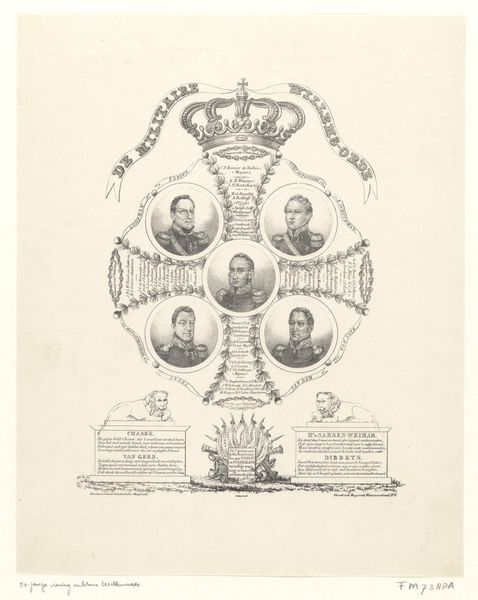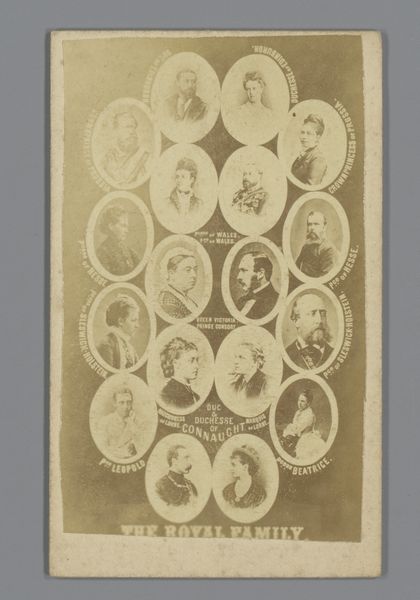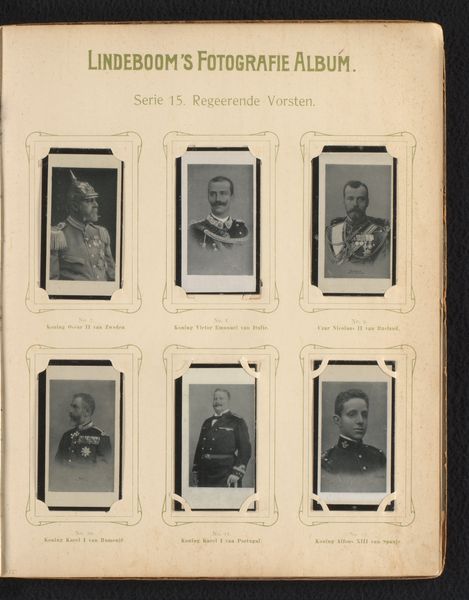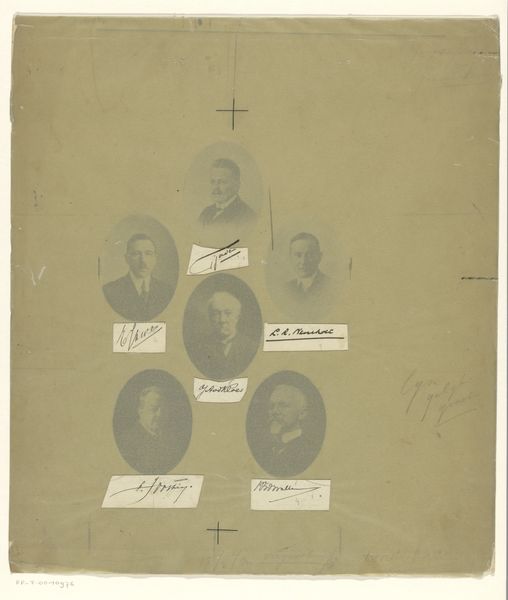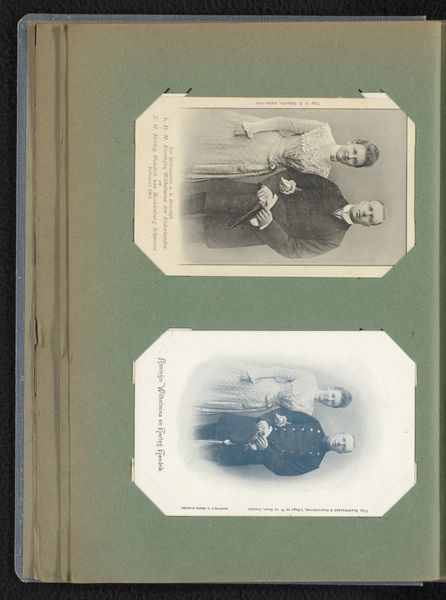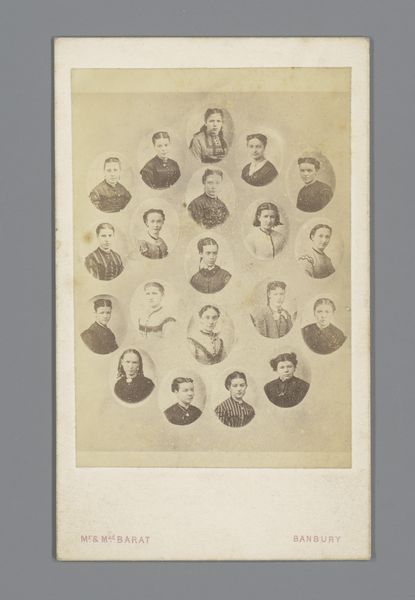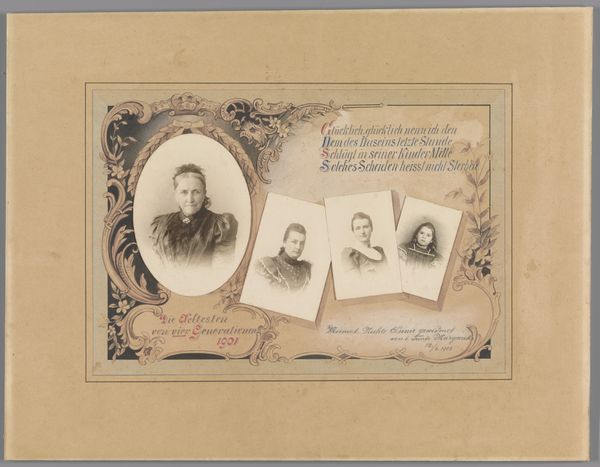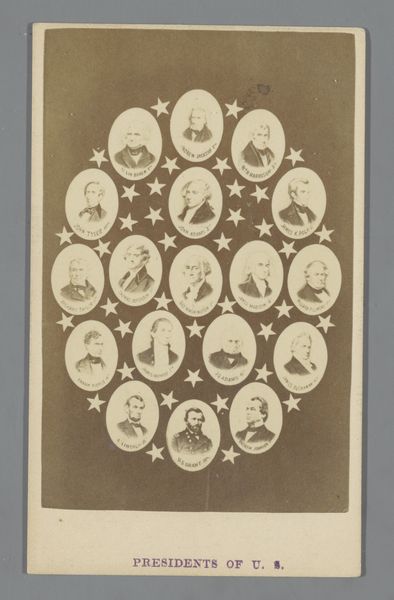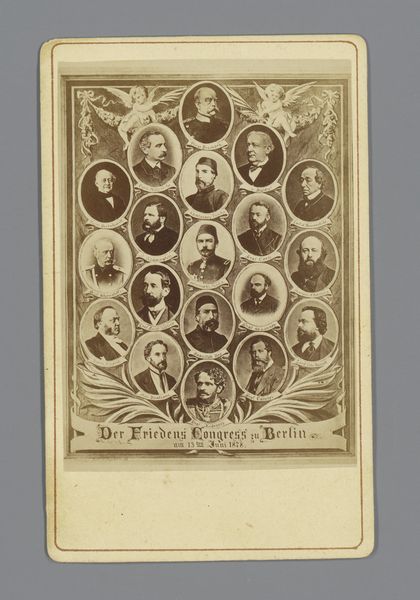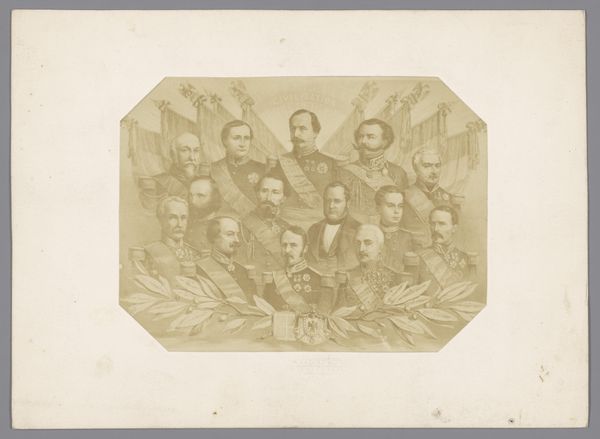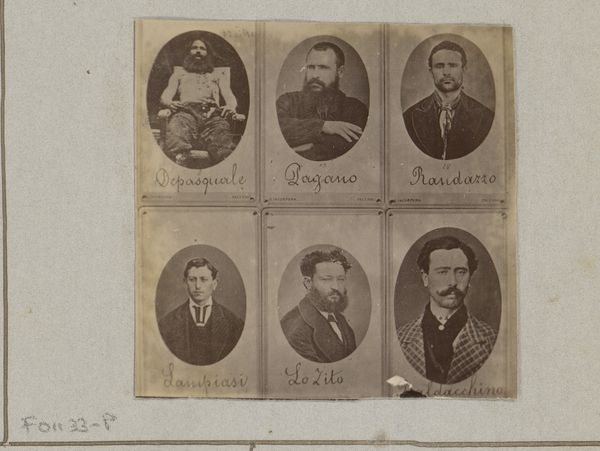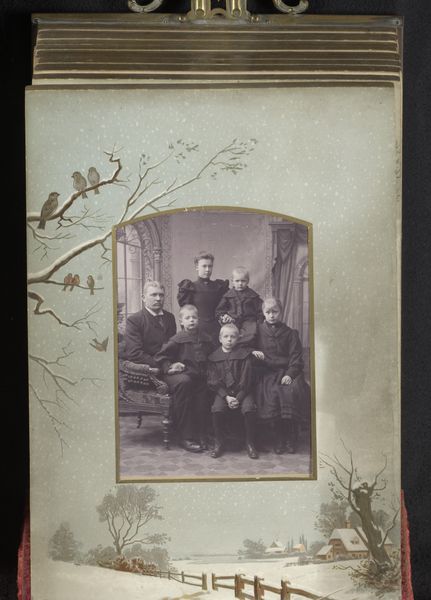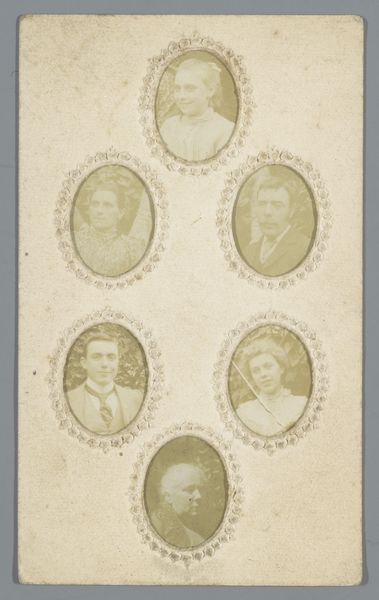
Montage van drie portretten van militairen die zijn gesneuveld bij de Slag van Königgrätz en de Oostenrijkse adelaar met lauweren Possibly 1866 - 1875
0:00
0:00
print, photography
#
portrait
# print
#
photography
#
group-portraits
#
history-painting
Dimensions: height 87 mm, width 53 mm
Copyright: Rijks Museum: Open Domain
Curator: Today, we’re examining “Montage van drie portretten van militairen die zijn gesneuveld bij de Slag van Königgrätz en de Oostenrijkse adelaar met lauweren,” a print featuring photographic elements attributed to H. Bayer, dating possibly between 1866 and 1875. Editor: It's a striking image; somber and reverential. The tonal range is narrow, which gives it a ghostly quality, amplified by the subjects who appear both present and irrevocably absent. Curator: Indeed. Observe the tripartite arrangement of the portraits, each enclosed within its oval frame, surmounted by the imperial Habsburg double-headed eagle. A garland of laurel leaves provides a structured, ornamental framework. The composition conveys hierarchy and order. Editor: But that "order" is imposed upon the chaos and loss of war. The three officers memorialized are, implicitly, victims of political ambition and military strategy. Who were they beyond these idealized depictions? What perspectives are absent? Curator: The artistic focus appears to rest primarily on the symbolic value. The eagle signifies imperial authority, and the laurel wreath represents victory, framing these individual losses within a narrative of state power. Note how each figure faces forward, evenly illuminated. Editor: I see an attempt to ennoble death. But the very act of montage—combining disparate elements—disrupts any sense of singular heroism. It emphasizes the fragmentation of both identity and history. This print doesn't just display these men; it processes their image through the lens of ideology. I find myself wondering how it was disseminated and received during this politically charged time. Who controlled this narrative, and whose voices were silenced? Curator: These are astute points. From a formal perspective, though, consider the artistry of the printing process. The careful layering and registration of photographic and illustrative components demonstrate notable technical skill. The aesthetic construction undeniably enhances the political message. Editor: Certainly, the formal elements contribute to its meaning and impact. Yet the true value, for me, is less in its skillful rendering and more in what it reveals about the complexities of memory, war, and representation, even today. What does it mean to render someone iconic in death, to serve a political function? Curator: A thought-provoking consideration. This image encapsulates not only historical and aesthetic value, but serves as a powerful memento, forever weaving personal tragedy into a grander narrative of empire and remembrance. Editor: A crucial reminder that behind every symbol and grand narrative lie individual stories and unspoken traumas.
Comments
No comments
Be the first to comment and join the conversation on the ultimate creative platform.
